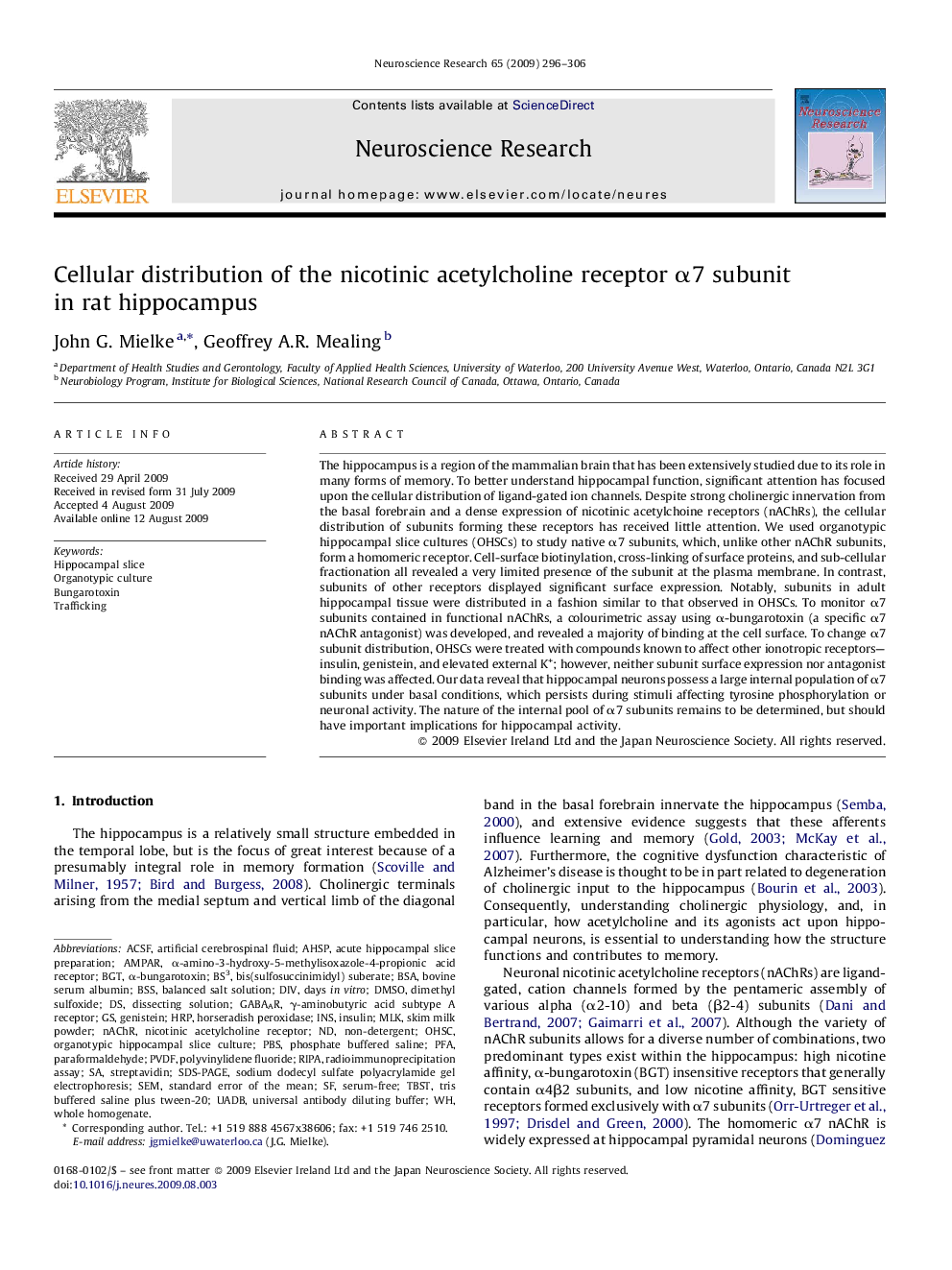| Article ID | Journal | Published Year | Pages | File Type |
|---|---|---|---|---|
| 4352316 | Neuroscience Research | 2009 | 11 Pages |
Abstract
The hippocampus is a region of the mammalian brain that has been extensively studied due to its role in many forms of memory. To better understand hippocampal function, significant attention has focused upon the cellular distribution of ligand-gated ion channels. Despite strong cholinergic innervation from the basal forebrain and a dense expression of nicotinic acetylchoine receptors (nAChRs), the cellular distribution of subunits forming these receptors has received little attention. We used organotypic hippocampal slice cultures (OHSCs) to study native α7 subunits, which, unlike other nAChR subunits, form a homomeric receptor. Cell-surface biotinylation, cross-linking of surface proteins, and sub-cellular fractionation all revealed a very limited presence of the subunit at the plasma membrane. In contrast, subunits of other receptors displayed significant surface expression. Notably, subunits in adult hippocampal tissue were distributed in a fashion similar to that observed in OHSCs. To monitor α7 subunits contained in functional nAChRs, a colourimetric assay using α-bungarotoxin (a specific α7 nAChR antagonist) was developed, and revealed a majority of binding at the cell surface. To change α7 subunit distribution, OHSCs were treated with compounds known to affect other ionotropic receptors-insulin, genistein, and elevated external K+; however, neither subunit surface expression nor antagonist binding was affected. Our data reveal that hippocampal neurons possess a large internal population of α7 subunits under basal conditions, which persists during stimuli affecting tyrosine phosphorylation or neuronal activity. The nature of the internal pool of α7 subunits remains to be determined, but should have important implications for hippocampal activity.
Keywords
PBSbis(sulfosuccinimidyl) suberateα-amino-3-hydroxy-5-methylisoxazole-4-propionic acid receptorMLKAHSPBGTbungarotoxinBSSTBSTα-bungarotoxinOHSCBS3RIPAaCSFPFAAMPARnAChRHRPPVDFINSBSADMSObovine serum albuminStreptavidinSDS-PAGESodium dodecyl sulfate polyacrylamide gel electrophoresisinsulinSerum-freeHippocampal slicestandard error of the meanDIVDimethyl sulfoxidedays in vitroradioimmunoprecipitation assayOrganotypic cultureorganotypic hippocampal slice culturePhosphate buffered salineTraffickingGenisteinartificial cerebrospinal fluidbalanced salt solutionSEMparaformaldehydeHorseradish peroxidasePolyvinylidene fluorideSkim milk powderGABAARnicotinic acetylcholine receptor
Related Topics
Life Sciences
Neuroscience
Neuroscience (General)
Authors
John G. Mielke, Geoffrey A.R. Mealing,
